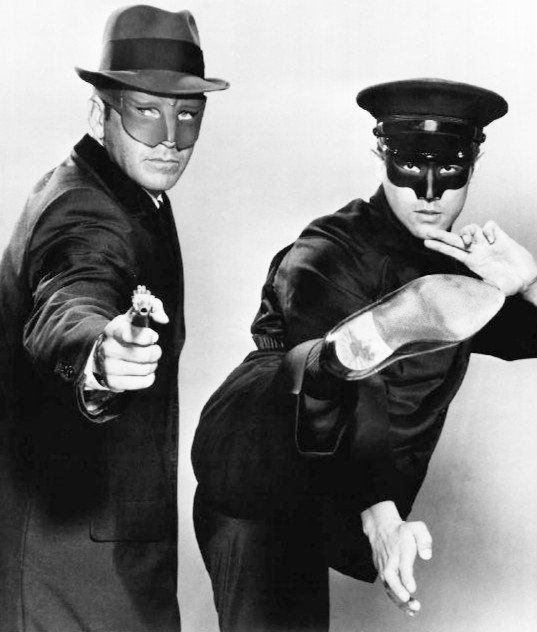The Green Hornet
It was listening to a radio play series that convinced me that Marvel Comics is science fiction and DC is fantasy.
It also convinced me to become a great fan of the Green Hornet, a relatively minor character as far as the pantheon of popular superheroes go, to whom I previously never paid much heed.
Erenow, I knew only three things about the Green Hornet. The first was that the Green Hornet was that famed martial arts star Bruce Lee was introduced to American audiences in the role of Kato, the ju-jitsu using chauffeur of the masked vigilante — and that he was absurdly overqualified for the role.
The second thing I knew was that the same producer who made the 1966 – 68 BATMAN television show such a popular success, William Dozier, was put in charge of the GREEN HORNET television show, and it was a great failure as much as BATMAN was a great success. I have heard many people speculating about why the first was a success and the second was a failure over the years. Indeed, I remember it being mentioned once as a bit of realistic background detail in a novel I read in my youth, whose title and author I have since forgotten, concerning a comic book artist haunted by his memories of the Hitlerian War. But I can state that I have found an answer that satisfies me, at least. The answer was the radio play was really quite good, and suited the kind of story the Green Hornet character was created to fit. More on this below.
The third and final thing I knew about the 2011 Green Hornet was that the movie starring Seth Rogan was an abomination. More on this below as well.
So this review has three points to cover: to describe the radio play and the origins of the character; to explain the failure of the modern television version; to condemn the postmodern ultra-failure of the movie version.
And, incidentally, to explain why, by and large, Marvel Comics characters like Spider-Man are actually Science Fiction, whereas DC characters like Superman are Fantasy.

The Green Hornet did have the best theme EVER:
There was also a version of the Green Hornet done in a twelve and fifteen episode cliffhanger-style chapterplay as movie shorts. For better or worse, I will not be discussing the serial chapterplay version. But I will post a picture or two from the chapterplay, because it was more true to the radioplay version, the original material, than was any later re-imagining.

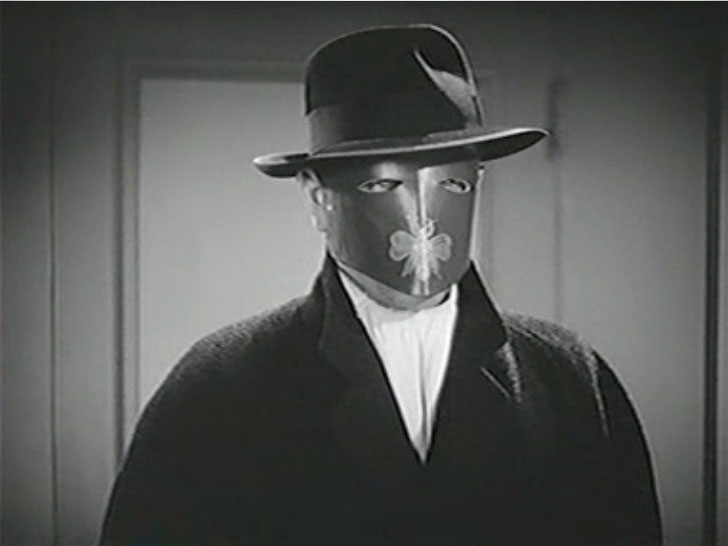 Like silent films (or, for that matter, like any art form) the radio play has certain conventions and tropes necessitated by the medium which the audience must include in their suspension of disbelief.
Like silent films (or, for that matter, like any art form) the radio play has certain conventions and tropes necessitated by the medium which the audience must include in their suspension of disbelief.
I admit it took me a little while to get used to the convention that everyone describes either aloud to himself or to his faithful valet every physical action he performs. ‘It is dark in here! I will turn on the light by means of this electric switch!’ [Sound of a loud click]. ‘You! Why are you standing there in the dark, wearing a mask?! That gun! Don’t shoot that gun at me!’ [Sound of a gunshot]; or ‘Take it, you rat!’ [sound of a blow] ‘That sure was a good sock on the jaw you punched him, Mr. Britt!’ and so on.
Oddest of all was that the Green Hornet’s gas gun — usually called ‘the gas weapon’— made no noise and had no sound effect. The audience knew the gas gun had been fired because the Hornet would says something like ‘Take it, you rat!’ followed by the crook making choking noises, and gasping, ‘Arrgh! Gas! Can’t breathe!’ followed by the sound of a heavy weight hitting the floor.
(I must admit that I cheered aloud the first time I heard someone say ‘Take it, you rat!’ or heard a Nazi spy called a ‘Ratzi!’ because erenow I had only heard such 40’s tropes as pale or inearnest imitations in homages, such as in Dave Stevens’ ROCKETEER. Such lines do not sound absurd in the original, taken in context, at least not to my ear.)
Comic books follow a similar convention of characters talking to themselves, with a monologue in a word balloon to explain the action happening in an otherwise still picture. ‘Oh no! Doctor Octopus is throwing me out the window with his powerful mechanical arms! The glass is shattering all about me! And I am plunging to my certain death into that burning cement mixer truck filled with nitroglycerine so far below!’ This is so the reader does not think the hero is crashing inward threw the window.
But, like silent movies, once one gets used to the strictures of the conventions, the imagination is paradoxically set free. The picture I have in my imagination of the Black Beauty is of a larger, heavier, and more dangerous-looking car than the 1965 Chrysler Imperial Crown used in the television show (as impressive as that car was).
Radio plays are plays for the blind, told in dialog with sound effects and background music. Narration, by convention, is kept to a minimum. Ironically, radio plays have more freedom of technique than novels, because voice accent, rhythm and intonation can convey information that a novelist must spell out. And we novelists have no background music.
Like THE LONE RANGER before it, which popularized the ‘William Tell Overture’, THE GREEN HORNET radio play used classical music to such good effect that Rimsky Korsakov’s ‘Flight of the Bumblebee’ is better known as Al Hirt’s ‘Green Hornet Theme’. I leave it to experts to argue when a jazzed-up arrangement differs sufficiently from its origin to be considered a different song with its own name.
More interesting to me is the sequence occurring in the first act of each show when the narrator describes that ‘Call to Action’ scene known to every fan of the superhero genre. Where Batman cries ‘To the Batpoles!’ or Superman tells himself ‘This looks like a job for … [drops his voice an octave] … Superman!’ and steps into a phone booth, in the Green Hornet radio play the narrator in his most tense and dark Film Noir voice recites this:
Stepping through a secret panel in the rear of the closet in his bedroom, Britt Reid and Kato went along a narrow passageway built within the walls of the apartment itself. This passage led to an adjoining building which fronted on a dark side street. Though supposedly abandoned, this building served as the hiding place for the sleek, super-powered Black Beauty, streamlined car of The Green Hornet. Britt Reid pressed a button. The great car roared into life. A section of the wall in front raised automatically, then closed as the gleaming Black Beauty sped into the darkness.
And the orchestra plays ‘The Infernal Dance of King Koschey’ by Stravinsky from his ballet THE FIREBIRD (If you saw Disney’s FANTASIA 2000, this is the song playing while the volcanic firebird attacks the elfin spirit of spring.)
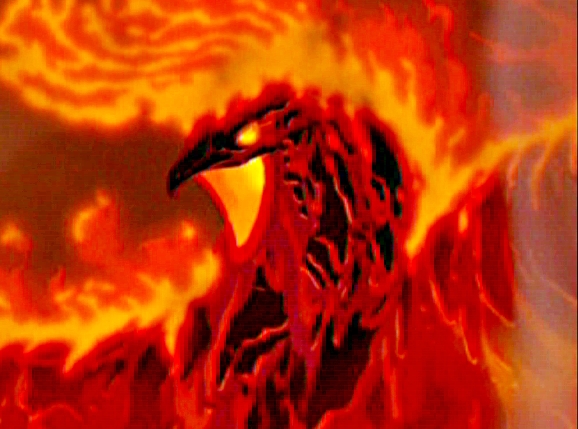 As far as I can tell, the radioplay never gave an origin story to the Hornet although one was added later, at least by the time NOW comics took over the character: namely, that Britt Reid, grand-nephew of the Dan Reid a.k.a the Lone Ranger, was a wealthy playboy given the job as editor of the Daily Sentinel newspaper by his father, hoping the weight of duty would make a man of him. While traveling in the orient, Britt saved the life of Kato, who, in return, devoted his life to him as a servant. In addition to being his cook and valet, Kato is also an engineering genius, and builds not only his silent gas weapon for Britt, but a car that can travel over 200 mph. The prototype of the car has a glitch in the horn which makes it emit a weird buzzing sound that sounds like an angry insect. (In the chapterplay, it was the car’s superhighspeed engine that ran so fast it sounded like an insect.)
As far as I can tell, the radioplay never gave an origin story to the Hornet although one was added later, at least by the time NOW comics took over the character: namely, that Britt Reid, grand-nephew of the Dan Reid a.k.a the Lone Ranger, was a wealthy playboy given the job as editor of the Daily Sentinel newspaper by his father, hoping the weight of duty would make a man of him. While traveling in the orient, Britt saved the life of Kato, who, in return, devoted his life to him as a servant. In addition to being his cook and valet, Kato is also an engineering genius, and builds not only his silent gas weapon for Britt, but a car that can travel over 200 mph. The prototype of the car has a glitch in the horn which makes it emit a weird buzzing sound that sounds like an angry insect. (In the chapterplay, it was the car’s superhighspeed engine that ran so fast it sounded like an insect.)
During the Black Beauty’s maiden trial run, an emergency arose, and Britt raced to the scene of a crime hoping to scoop his rival newspaper, the Clarion, intending to use the car to make a quick getaway. Instead, the unique car was seen at the scene of the crime, the owner presumed to be one of the gangsters involved in a murder. Rather than involve his family in scandal, Britt decided to embrace the mistaken identity, don a mask, and assume the role of a gangster and racketeer. Unlike, say, Spiderman or the X-Men, the Hornet is not a hero falsely accused but cannot clear his name, but a hero who deliberately accuses himself and poses as a criminal as an self-appointed undercover agent, making allies in the underworld, and using his fearful reputation to terrify the crooks, either to get evidence to turn over to the police, or to lure the crooks into a ‘sting’ operation — hence his name as a hornet. Why he is green, no one knows.
Mike Axford is an ex-cop with many friends still on the force who works for the Sentinel, having been assigned to Britt by his father to serve as a bodyguard. He is both the main foil of the Green Hornet, as the man most devoted to finding and unmasking him, as the comedy relief, as the tough Irishmen with a heart of gold and a mouth full of blarney. He occasionally gets tip-offs and scoops for the Sentinel from his buddies in the police force, and hungers to get something published under his own by-line.
Mike Axford was a character on the previous radio play aired in the same time slot as Green Hornet, a detective show called Manhunters, so when he first appears in the first episode of GREEN HORNET as Britt Reid’s bodyguard, there was no need to introduce him.
Lenore Case, aka Casey, is Britt Reid’s secretary, as she is the foil for Axford, scoffing at his theories that the Green Hornet is the kingpin behind all the crime in the city. She and Axford exchange barbs and banter while waiting for Reid to get to his office (and bring the audience up to speed as to the setup for that week’s adventure). Reid is rarely in his office, or gets in late, not because he is out at the theater or nightclub enjoying the high life, but because he and Kato stay up all hours on stake outs and break-ins.
Other regular characters included photographer ‘Clicker’ Benny. Clicker affected the accent and manners of a Southern Belle, and routinely lured the men around her into thinker her less intelligent and alert than she was — a routine similar to that of Columbo.
Ed Lowry was another recurring character, the ace reporter, but he did not have a distinctive stereotypical accent, Japanese, Irish or Southern, so I am afraid he is a little hard to recall.
The purpose of making Britt Reid an editor is the same as the purpose of making Clark Kent a reporter or Peter Parker a photographer: newsmen are naturally close to the criminal world, and develop contacts among the police and politicians, and the business community infiltrated by racketeers.
(A personal aside: In every superhero game I run, I make it a habit to have Lois Lane and Clark Kent for the Planet, Eddie Brock with Peter Parker in tow for the Bugle, Vic Sage for KBEL television, and Britt Reid for the Sentinel show up at news events. So that, for example, when the first Latverian-United States joint moonrocket project is announced, and president Lex Luthor is shaking hands with the monarch Doctor Doom, and some emergency happens, the press room is suddenly empty except for a suspicious Lois Lane.)
I must say, however, that the Green Hornet’s job as a newsman is integral to his character, unlike Superman and Spiderman, who can go many episodes without checking in at the office.
This is because the Green Hornet is not really a superhero, by which I mean he has no special powers, just a gas weapon and a mean right hook and a meaner reputation. He is a one-man racket buster.
The main surprise to me listening to the show was how grim and serious and mature in theme and matter it was. Each episode consisted of Reid tracking down a different type of graft or confidence trick. Violent crime was rarely involved, and when it was, it was usually murder or kidnapping meant to cover up a racket.
The rackets were all utterly realistic, taken from the headlines of the day. Not once was there any crime with any element of the fantastic or superscientific, and in no sense did the Green Hornet ever cross wits with anything that could be called a supervillain.
One amazing thing was how petty some of the rackets the Hornet busted might be. One episode, for example, concerned dishonest song publishers who would promise would-be dreamy-eyed lyricists to publish their music in return for $50 (which would be something more than $1000 of our modern, devalued money); another episode concerned grifters running a racket deceiving hopeful short story writers with a similar false promise. The offer is technically legal, since the grifter then sticks the same tune on all lyrics, and publishes them on a cheap, low-quality mimeograph. In this second case, the Hornet traps the publishers by tricking them into publishing an already published (and famous) short story, putting them in trouble with the law, and proving that they never read the stories to begin with: and the Hornet, in his guise as a gangster, threatens to sic the police on him unless he restores all the money to the foolish hopefuls. It is a perfectly entertaining show, but, really, it is nothing like Lex Luthor threatening to melt the polar ice caps.
What is more amazing is that some of the bad guys were crooked cops, politicians on the take, or judges being bribed or threatened. In the comics code, law enforcement officers are never held up to ridicule, and it was not until Jack King Kirby wanted to mock Nixon that the governing class in our country was portrayed as criminal. Ah, but that was a generation later. In the time of the Green Hornet, in the 30’s and 40’s, the audience, even the kids, knew that corruption had tainted local government, and some cops were crooked, and they saw nothing wrong with a masked vigilante hunting them down and revealing them.
I cannot recall, offhand, any episodes of Superman or Batman where the mayor of Gotham City or Metropolis hires ward bosses to buy votes for an election, or where the masked supercrook’s plan is to grift money from innocent and hopeful immigrants who do not know that citizenship in America is not purchased for cash.
Here are a smattering of some of the episodes I found more memorable. For example, in this one, Oliver Perry, the closest thing the Green Hornet ever has to a nemesis, is trying to unmask the Hornet, and prove he is Britt Reid:
This show is from the war years, and the racketeer here is selling meat on the black market, in defiance of war rationing.
Another wartime episode, and this one is the closest I have heard yet to a Superman-style episode, because the McGuffin is plans to a secret weapon.
A postwar show from the boom years. A good old fashioned protection racket, run by an old crook from the Roaring Twenties. The odd thing about this episode is that the Hornet himself never shows up at the climax, just the police and the racketeer that he tricks into showing up at the rendezvous.
This was a more typical show, where the politician is accused of selling paroles to convicts:
This one is a particular favorite of mine, only because the radio play explains to the kids the evil side effects of tolerating protection rackets, namely, that it is theft from all the customers of the victim as well. And, once again, this racket concerns on one-cent per gallon protection racket on all the gas stations in the city.
When is the last time Doctor Doom stooped to stick up gas stations, or Superman fought to lower your energy bill? That is what was so appealing to me about these old time Green Hornet shows. Despite the obvious pulp fiction elements of the souped-up motorcar and the knockout gas gun, he is not a super hero. He is exactly what his origin story paints him to be: a lawman. Green Hornet is a modern version of the Lone Ranger. Kato is Tonto, the Black Beauty is Silver, the abandoned building where the car is hidden is the same as the hidden stall in the silver mine where the Lone Ranger hides his steed, and instead of the signature weapon of a sixgun shooting silver bullets, the Hornet has his gas gun. Instead of leaving behind a silver bullet as a sign of his presence, the Hornet leaves behind his seal.
The other signature flourish was that every show ended with the newsboy crying out,”EXTRA! EXTRA! PARKING LOT EXTORTION RACKET SMASHED! [or whatever the crime of the week] And then end with “GREEN HORNET STILL AT LARGE!”
In researching this article, I came across a surprising amount of disinformation concerning the Green Hornet, and at least one outright lie, often repeated.
The lie is that the idea for the Green Hornet is racist, on the grounds that he has a oriental manservant. If someone wanted to argue that the Green Hornet spread bigotry against Irishmen, on the grounds that the the tough yet infantile Mike Axford yelling “Suffering Snakes!” and “Holy Crow!” sounds like a loveable idiot, one should not dismiss the argument unheard. The argument that Kato is racist is too idiotic to merit the honor of a rebuttal. He is, in fact, portrayed as loyal, quick-witted, and competent.
In one of the episodes above, for example, when someone is setting a trap for the Hornet, it is Kato who sees through his disguise, takes his calling card, and immediately takes it to their private lab and dusts it for fingerprints, and penetrates the disguise.
Indeed, if you wanted to make an audience have fondness and affection for oriental peoples, there is no better way than to introduce them as secondary characters in children’s adventure stories, and then have the character be wise and strong and able.
I will admit that Kato in the radioplay kicks tail less frequently than in the television version, but this is only because ju jitsu (which is what they call it in the radio play) looks less impressive on the radio.
It goes something like this: [Sounds of a struggle] ‘Ah, Kato, you took care of that big thug by the door with your ju jitsu! Good work!’ ‘Yes, sir, Mister Britt. But how we find the missing counterfeit plates, yes?’
It is true Kato has an accent. However, if you notice, the only characters I listed in my list of characters above, everyone has a distinctive voice: either a girl’s voice, or a thick Irish accent, or a thick gangster accent or a thick Oriental accent. For myself, it is relief in a radio play when someone with a distinctive accent talks, because otherwise everyone sounds like a middle-aged middle-class male from the midlands.
Again, you might say it is racist to have a show in which the Oriental servant was not the master. Here an element of realism must enter: many people of the middle class, and all people of the upper, in the 1930’s employed house servants, many more than today with our labor-saving devices. None of the millionaires were Japanese living in America with a White valet.
The accusation of racism is based on a Marxist idea of history as a power struggle between unequal forces, of which the stronger always oppresses and demeans the weaker. This is an un-insightful and frankly childish idea of history, and is at odds with the glorification of servitude which characterizes Western civilization. In the West, the ideal of a knight with a squire or a hero with a sidekick, a Sancho to your Quixote, a Patrocles to your Achilles, is as old as epic, and as old as mankind.
If the modern reader cannot tolerate the idea of an ideal and loyal servant, one who serves and saves his master, and is his friend and only true companion, then the modern mind is sick, not to mention cut off from humanity and human history. The sickness is the addiction of seeing everything as a power struggle. The master who washes the feet of the servant is an ideal the modern mind is too crippled to understand, nor the squire who faithfully serves his knight.
Now, one might complain that Kato has little to do except to have someone to whom Green Hornet can explain whatever the audience needs to know. But this is a limitation of radio plays in general, or of any art that depends on dialog: the same criticism can be leveled with as much justice against the dialogs of Socrates.
In addition to the vicious lie about racism, there has been much innocent misinformation spread about the Green Hornet, especially the story that Kato was Japanese until Pearl Harbor, and then quickly changed to Filipino. In reality, he was introduced as an unspecified Oriental in the radio play, later changed to Japanese (to match the race of the actor playing him), but in 1937 (two years before Pearl Harbor) was changed again to a Filipino. In the serial chapterplay, he is Korean; in the television show, he is Chinese (again, to match the race of the man playing him). Not to worry: in one of the later comic book incarnations, he is a girl.
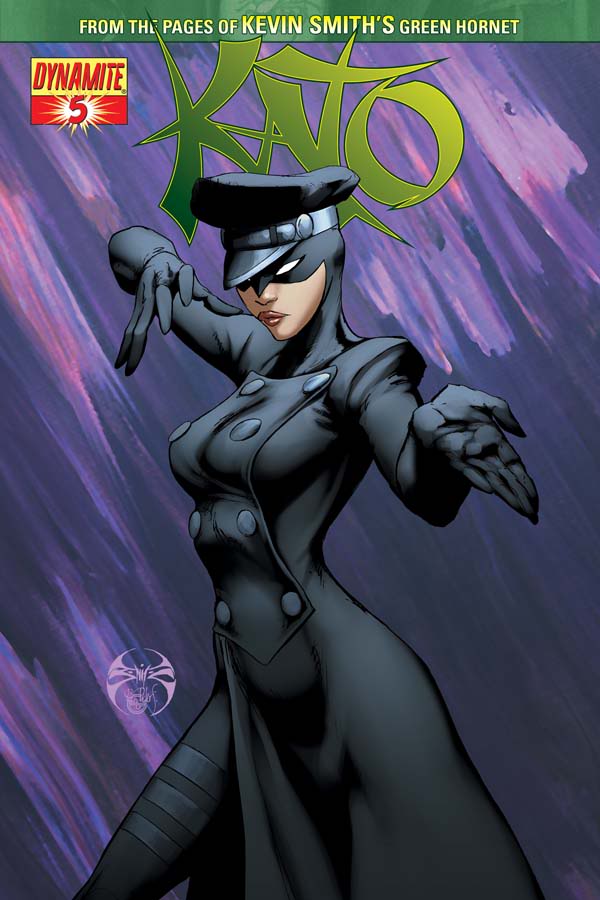 This follows the general trend of making Kato more and more badass in every reincarnation, and, for reasons that do not bear looking into closely, the modern market prefers busty babes in tight clothing to be the epitome of badass.
This follows the general trend of making Kato more and more badass in every reincarnation, and, for reasons that do not bear looking into closely, the modern market prefers busty babes in tight clothing to be the epitome of badass.
A second urban myth is that the original opening (He hunts the biggest of all game— public enemies even the G–Men cannot reach!) found disfavor in the eyes of J Edgar Hoover, and at his insistence was changed to the second version (He hunts the biggest of all game—public enemies who try to destroy our America!). In reality, Hoover loved the show, which strongly preached to the public that honest government was possible only when everyone cooperated to smash racketeers. The opening was changed near the beginning of the war, perhaps because the Hornet began also hunting down spies and saboteurs.
Both myths spring from a single interview given many years after the fact by the inventor of the show, and he simply followed his showmanship instinct and told the more sensational, and less true, version of events in both cases.
So, in sum, the GREEN HORNET radio program was cleverly written, rather entertaining, and somewhat more down-to-earth, gritty and mature than the average superhero adventure. Indeed, where it not for the fact that the hero is a masked man hunted by the police using a gas gun, it would have been akin to any other crime drama.
The chapterplay matched the visual look of the hornet to his description on the radio, followed the same formula as the radio play: namely, that he busted rackets and grafters, and each episode was self-contained.
Then came the television show. It introduced several new elements, most importantly making Kato a master of martial arts, thanks to the incomparable Bruce Lee. This sent into motion the tendency to emphasize the chauffeur at the expense of the master. The Hornet was also given an extra weapon, a ultrasonic wand called the Hornet’s sting, which blew open locks and blasted guns out of goon’s hands.
The Black Beauty was ramped up to a rolling arsenal and spycar, complete with oil slick and missile launcher and mounted machine guns. This also created the tendency for the car to become the star of the show.
The reason why the television show is now a half-forgotten corner of history where the BATMAN show, produced by the same producer, was an enduring a pop phenomenon, in hindsight, is simple: the television version of GREEN HORNET was not true to its roots. It was a compromise, half pop-culture and half serious, instead of being full-serious like the radio play.
The show tried to combine Green Hornet with some of the tongue-in-cheek of Batman, when the producers would have been better served trying to combine it with something like DRAGNET. The Hornet is a gangbuster, not someone who is supposed to be rescuing scientists with secret weapons, or stopping mad hypnotists, or other pulp villains. He is not the Batman; he is not even The Shadow.
By that I mean that Green Hornet is not from comics nor from pulp magazines, but from the radio, and, since radio depends on dialog for its effect, this character depends on his ability to lure, bluff, and terrify the crooks (who think him one of themselves, and a deadly murderer not to be trifled with) by the power of his voice, that is to say, by the power of his wits, into police dragnets. Radio appeals to the ear and mind in the way that television appeals to the eye and heart. Radio is innately more intellectual a medium (hence the unmitigated failure of leftwing talk radio). The hero of the radio play must be more like a Sherlock Holmes style detective, or a Dashiell Hammett character, a solver of mysteries, a little more like Robert Redford’s character in THE STING, and a little less like an action hero (but only a little), and lot less like a super hero.
The failure of the television show, in my guess, was due to its lack of integrity; it tried to be two things at once, and fell between the stools. Honestly, the older and bolder version of Green Hornet did not need a car that shoots missiles to uncover graft in the Mayor’s office.
Because Bruce Lee was so accomplished as a martial artist, he overshadowed Van Williams, whose stage fisticuffs were merely conventional. From that day forth, Kato tended to get more reader attention. In at least one comic, he has top billing.
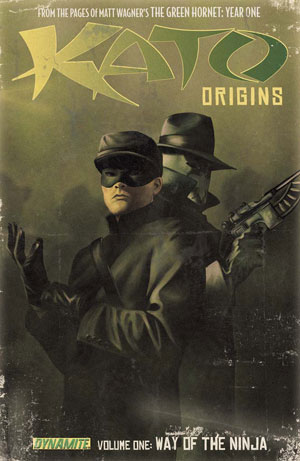 (I am including this image in part to pay homage to that way cool design for the gas pellet gun, which is taken from the chapterplay version.)
(I am including this image in part to pay homage to that way cool design for the gas pellet gun, which is taken from the chapterplay version.)
The tendency to magnify Kato and diminish Britt Reid reached its absurd conclusion, aided in no small measure by the anti-White bigotry fashionable in the West, in the abomination of the film, where the chauffeur is so Way Cool and so badass that he is not even willing to touch the hand of the sloppy goofball allegedly portraying the Green Hornet. The roles by then are completely reversed, and the hero is not only the sidekick, but he is the odious and insufferably unfunny comedy-relief sidekick.
The movie version was an abomination by any standard. The only cool thing in it was the car, who now entirely upstaged the hero.
Up until then, I was a firm believer in the divine muses of Mount Hippocrene, supernatural beings who inspire madness and genius in poets; after seeing that movie, I became an atheist of muses, on the grounds that if there were divine goddesses overseeing the arts, they would have descended in wrath from their mountainside, and used their masks, tablet, globe, lyre, cithara, aulos, not to mention pearly white teeth and manicured long nails, to pummel and tear to death the producer, director, writer and everyone associated therewith in a massive bloodbath of divine vengeance.
I know many an honest atheist who cannot believe in the God of Abraham on the grounds that a benevolent yet divine being would not allow pain to enter Creation, no matter what Man had done. Likewise, I can no longer believe in the Tenth Muse, Sensawunda, the Muse of Superhero Stories, because if she were true and divine, Seth Rogan’s GREEN HORNET would never have been permitted to enter the theaters.
The film followed in the footsteps of STARSHIP TROOPERS by having nothing but contempt for its source material, and attempting nothing but to make that material into a joke.
However, despite this, the film did three things right: first, the Hornet’s enemies were racketeers, gangland crooks, albeit of the modern version. Second, the Black Beauty was Way Cool. Third, the Hornet was pretending to be a criminal in order to fight crime.
Everything else was wrong, except, perhaps, that my teenaged Chinese daughter liked the casting of Jay Chou as Kato, who did an adequate if unmemorable job in the role of Kato. Frankly I thought Jet Lee did a more convincing Kato in the martial arts actioner BLACK MASK, and he was not even playing Kato.
Maybe the movie should have followed the NOW comic and made Kato a femme fatale?
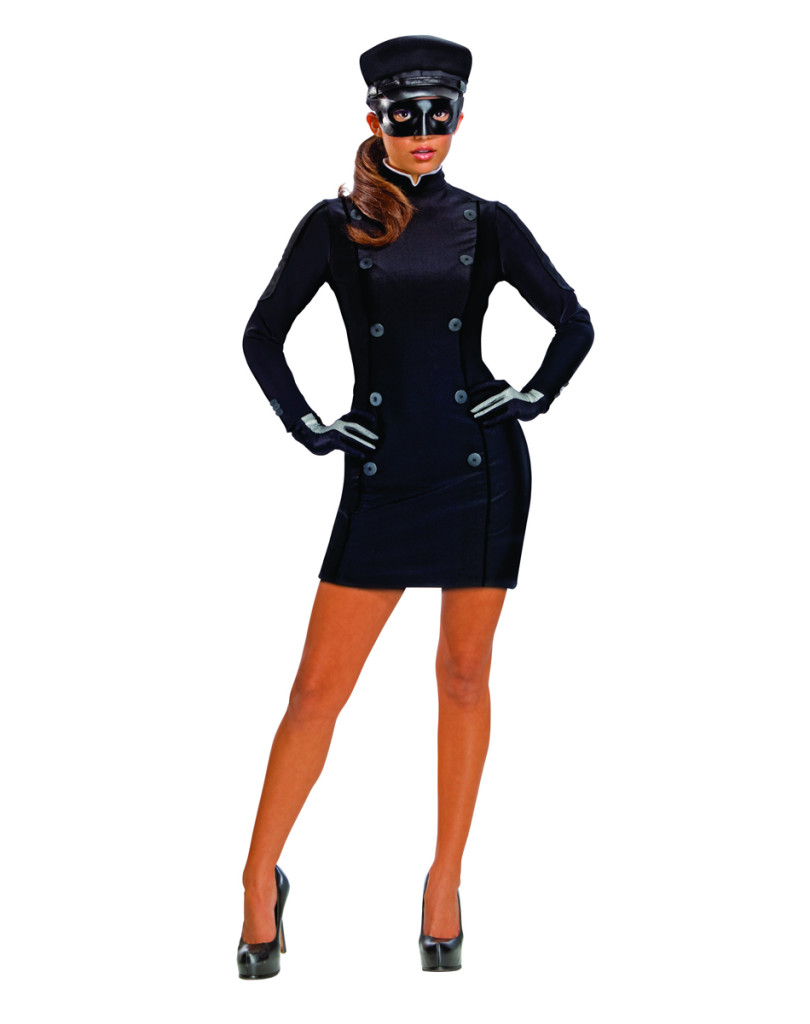 One of the things that appeals to me personally about Green Hornet is that he is a low-power character, and consequently requires more use of his wits, and better writing, to get out of situations that Superman or Spiderman would not even pause to notice. I remember one episode of the radio play dwelling for a long time on how hard it was for the Hornet and Kato to reach the extending ladder of a fire escape in order to break into a crook’s upper story apartment. (Even The Shadow would have had no such problem, since he can climb with his acrobatic suction disks.)
One of the things that appeals to me personally about Green Hornet is that he is a low-power character, and consequently requires more use of his wits, and better writing, to get out of situations that Superman or Spiderman would not even pause to notice. I remember one episode of the radio play dwelling for a long time on how hard it was for the Hornet and Kato to reach the extending ladder of a fire escape in order to break into a crook’s upper story apartment. (Even The Shadow would have had no such problem, since he can climb with his acrobatic suction disks.)
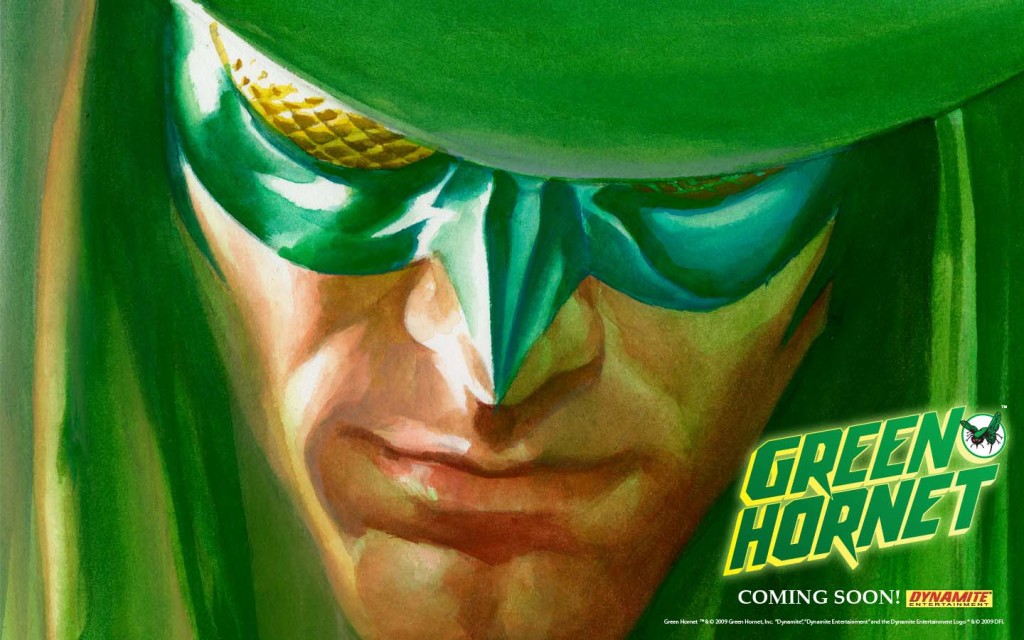 I am often amused or intrigued to see how in the comic book universe someone like Green Arrow is on the same team, and slugging in the same weight class, as Superman or the Martian Manhunter (who has all Superman’s powers, plus the ability to read minds, walk through walls, and change shape). Whereas the Green Arrow shoots a pointy stick, perhaps with a boxing glove attached. For the same reason, my favorite member of the Legion of Superheroes from the Thirtieth Century is not Ultra Boy or Saturn Girl but Karate Kid. He earned his place in that roster with no powers, by sheer diligence of training. So I have a fondness for the bantam weight heroes.
I am often amused or intrigued to see how in the comic book universe someone like Green Arrow is on the same team, and slugging in the same weight class, as Superman or the Martian Manhunter (who has all Superman’s powers, plus the ability to read minds, walk through walls, and change shape). Whereas the Green Arrow shoots a pointy stick, perhaps with a boxing glove attached. For the same reason, my favorite member of the Legion of Superheroes from the Thirtieth Century is not Ultra Boy or Saturn Girl but Karate Kid. He earned his place in that roster with no powers, by sheer diligence of training. So I have a fondness for the bantam weight heroes.
Green Hornet, like Spiderman, lives in a more realistic universe than Superman or Batman. Spiderman lives in New York, and has to deal with daily troubles such as getting his laundry done or paying his rent on time. Superman lives as a mild mannered reporter but also dwells in the Fortress of Solitude at the North Pole, and the Batman lives either in a mansion or in a cave — both places simply brimming with mythical overtones. Spidey lives in Queens. See the difference?
While they have changed over the years, and while any blanket statement with my moth-eaten with the holes of exceptions and counter examples, on the whole DC characters are more elemental, more mythical more larger-than-life than their counterpart Marvel characters.
And, again, while the definitions can be debated endlessly, the main difference between the science fiction genre and the fantasy genre is this: Fantasy lulls the reader into a suspension of disbelief by means of elemental, mythical and larger-than-life scenes, situations, and characters who spring from the common bedrock of human legend. Fantasy is believable when it feels right according the dream logic of fairy tale or myth. On the other hand, science fiction lulls the watching dragons of skepticism to sleep by means of an appeal to scientific verisimilitude: the elements in a science fiction story are based in the scientific background the reader holds to be true, and from that basis reach out limbs into speculations either partly feasible (as in hard SF, e.g. GATTACA) slightly feasible (as in soft SF, e.g. STAR TREK) or not feasible at all but nonetheless having a scientific icing on an otherwise fantasy cake (as in Space Opera, e.g. STAR WARS).
The main appeal of Marvel was that it kept its heroes, with the grand exception of Thor, grounded in the real world and gave them realistic personal problems in their lives to go along with their wild deeds of derring-do. It was the comic book version of science fiction, that is, the imagination of the reader is tempted to accept the fantastic elements as real once the realistic elements lull the skepticism to sleep with their sheer quotidian realism.
Marvel heroes are comic book versions of modern or early modern science fiction ideas. The Hulk, for example, is a cross between THE STRANGE CASE OF DOCTOR JEKYLL AND MR HYDE and FRANKENSTEIN, perhaps the most famous of all early scientific romances. Nearly everyone else in the Marvel Universe is the by product of a failed scientific experiment, Man dabbling with nature where he should not: Spiderman bitten by a radioactive spider, the Fantastic Four exposed to mysterious comic radiation, the Daredevil hit by a radioactive can of debris, and so on. Captain America is born in a rare successful application of science; Iron Man is an ironic example of a man utterly dependent on the technology that makes him superpowered. He is, as we Heinlein fans know, merely the earliest example of a Mobile Infantry starship trooper.
The main appeal of DC comics, by and large, is the opposite: Superman reflects the mythic legend of Hercules or Moses or any other orphan sent down from heaven; Batman reflects the mythic and Gothic horror of an angel of death or supernatural avenger; the Green Lantern is Aladdin with his magic lamp and magic ring; The Flash, at least in his first incarnation, is Mercury even to the point of wearing his sandals and hat; Aquaman is Neptune, even, in his later incarnation, to carrying a trident; Wonder Woman is an Amazon; Green Arrow is Robin Hood; and so on. These are all updates of ancient legends.
With this idea in mind, I realized what I liked about the Green Hornet. He is a science fiction hero rather than a fantasy hero.
Any young man of ordinary athletic ability and a healthy bankroll of money from his job as a newspaper publisher could, once he saved the life of an oriental mechanical genius and kung-fu master, buy a fast car and get a weapon that stuns rather than kills, such as a taser. He might even be able to mount machine guns on his car. It is less fantastic than other things real men and women have done, and requires not more bravery than is routinely displayed by undercover policemen or marines in the field.
Now, I am not an unbiased witness. I believe that there are newsmen these days who are not abject cowards in the tank for the machine politics of the modern racketeers, because I used to work for one. His name is Ken Rossignol.
He was utterly fearless.
Since he made it his business to uncover the corruption and ‘sweetheart deals’ of the ‘good ol boys’ and Boss Hoggs running the county, he of course received death threats. One came from the wife of the deputy Sheriff, for example. Other came from the pushers smuggling dope and drugs into the county. He routinely wore a flack jacket to work. When drug pushers would come in to threaten him, he would smile with unflappable Southern charm, and invite the man to make a statement on the record for publication.
Ah, I admired him as I admire few men. He was also crazy as a bedbug. If he dressed up in green and went out at night to lure crooks into stings, I would not be surprised.
There were episodes in the Green Hornet radio play concerning protection rackets, crooked building inspectors or superhighway bids stealing from public funds, sweetheart deals, crooked cops taking bribes from gambling joints, false accident claims, and so on.
It was the same kind of thing I used to cover back when I worked for the newspaper, the same kind of thing no doubt going on right now in your own county and state government, but which your newspapers are not reporting.
And thanks to the sole efforts of the three man operation under my boss (me, the editor’s mom and, the photographer) Ken Rossingol managed to uncover scandal and corruption which our competitor paper, the in-the-tank propaganda organ for the machine whose name I will not honor by repeating here, four out of five of the county commissioners were unseated by voters the next election. Happy ending. It really happened. One man can clean up a county, or at least make a major dent in the corrupt machine politics.
So that is one reason why I like the Green Hornet. I met his real world counterpart.
And, when it comes to the Green Hornet, I also like the theme song.
I freely admit my admiration for this character is his timeliness. The 2010’s are the 1930’s come again: machine politics, corrupt government, shamelessly lying-ass newspapers, crony capitalism, socialist and populist demagogues, and everything run by the insiders and the cliques and the robber baron style industrialists — GM and Eastern banks are as much a part of the government as any department or government-sponsored syndicate in Mussolini’s Italy.
So listening to these radio plays is for me like a starving man listening to a cooking show. One man with a camera, or wired with a sound recording, could do as much as a superhero in revealing what the news media is keeping from us. The problem is that in real life, the government is corrupt because the people either don’t care whether government is honest, or they like the corruption.
What I would not give to walk down the crowded streets of the unnamed metropolis where the Sentinel stands sentinel over our liberties, and hear the newsboys crying out, “EXTRA! EXTRA! IRS RACKET SMASHED! FAST AND FURIOUS SCANDAL COMES TO LIGHT! BENGHAZI COVERUP RIPPED OPEN! GREEN HORNET INVOLVED IN ABUSE OF POWER AT THE HIGHEST LEVELS OF GOVERNMENT!
“GREEN HORNET STILL AT LARGE!”
